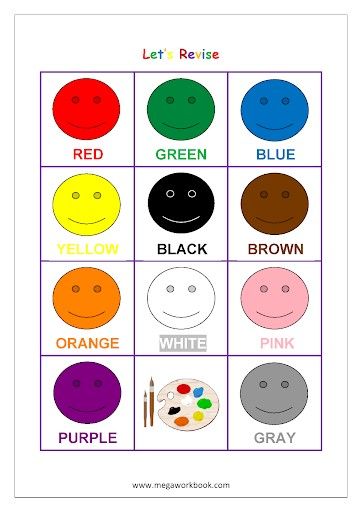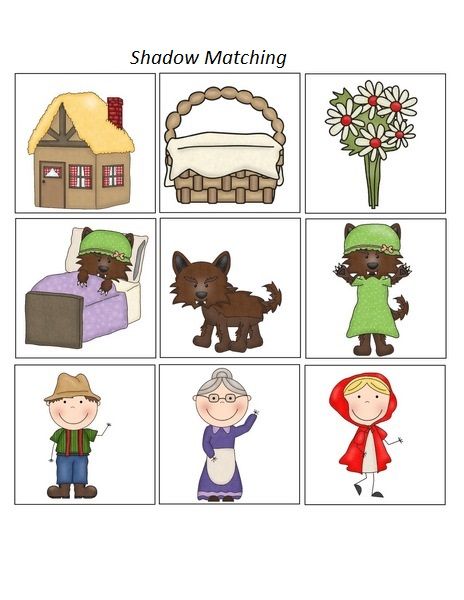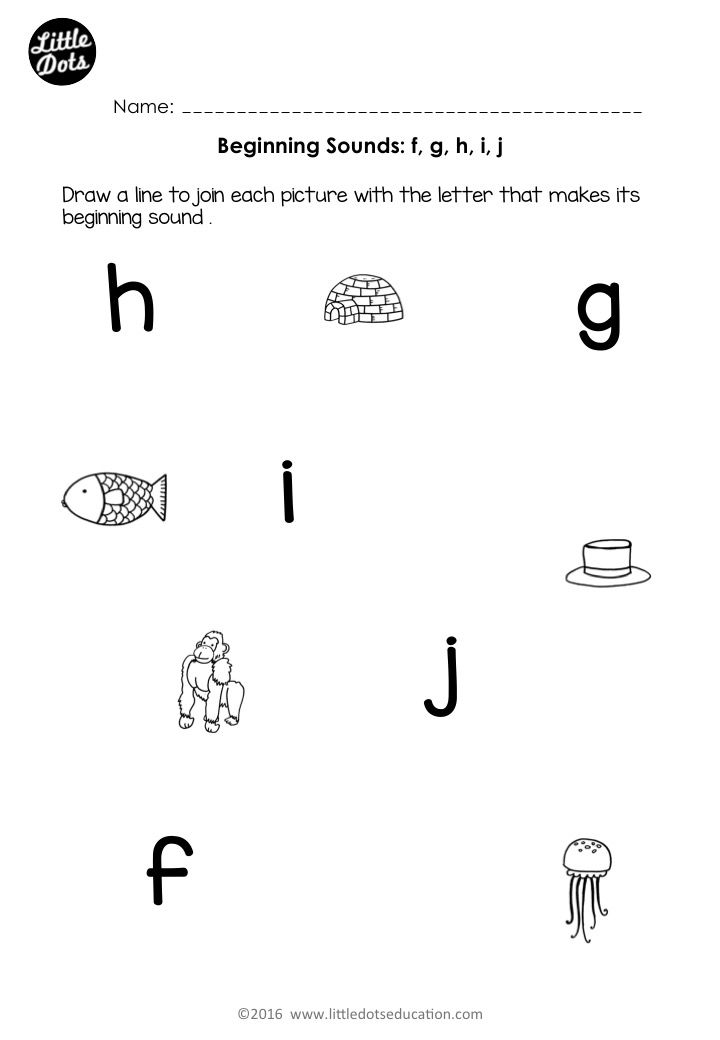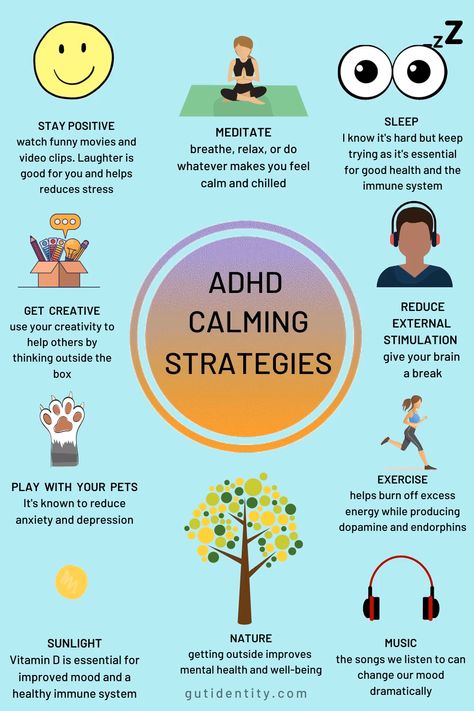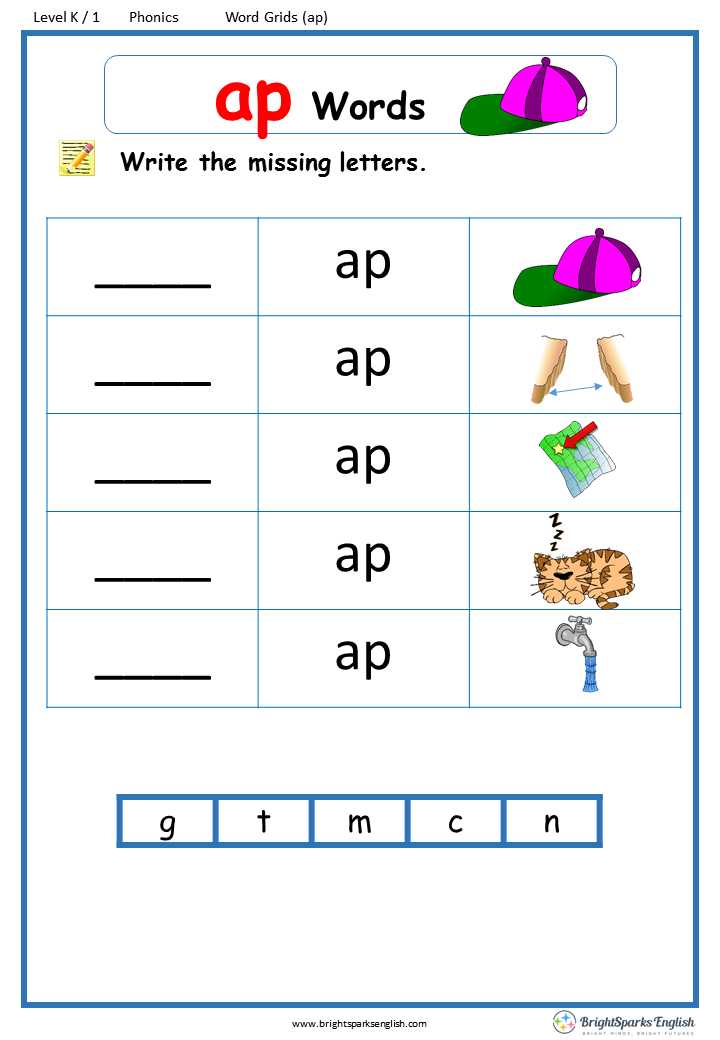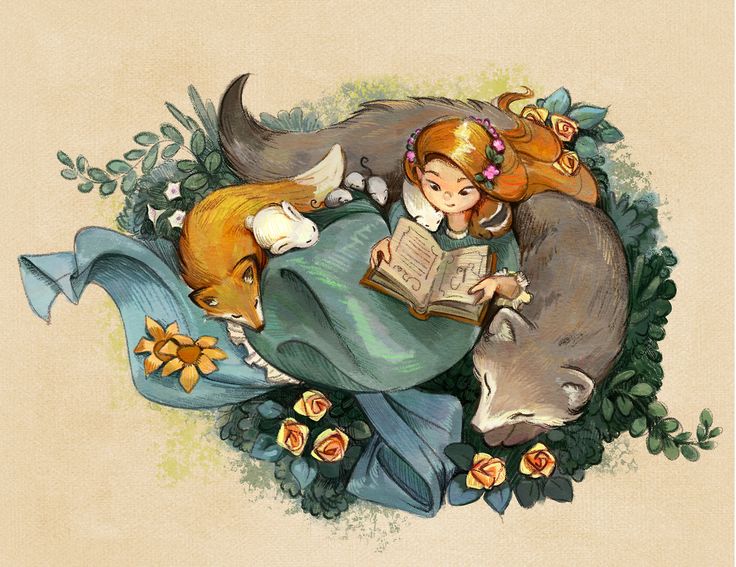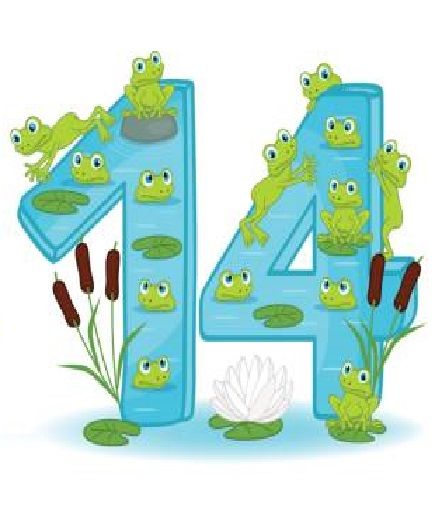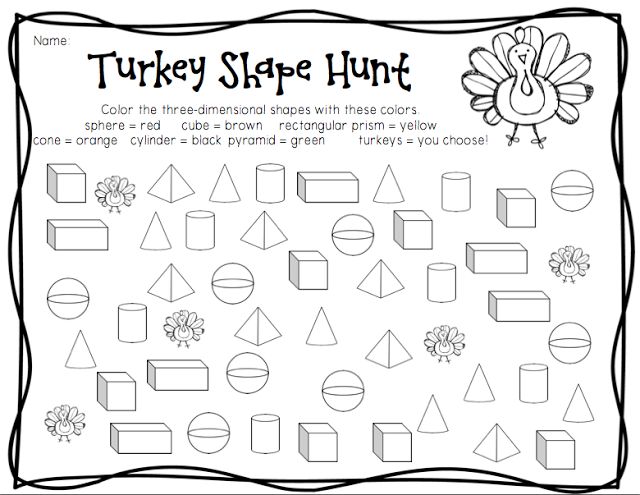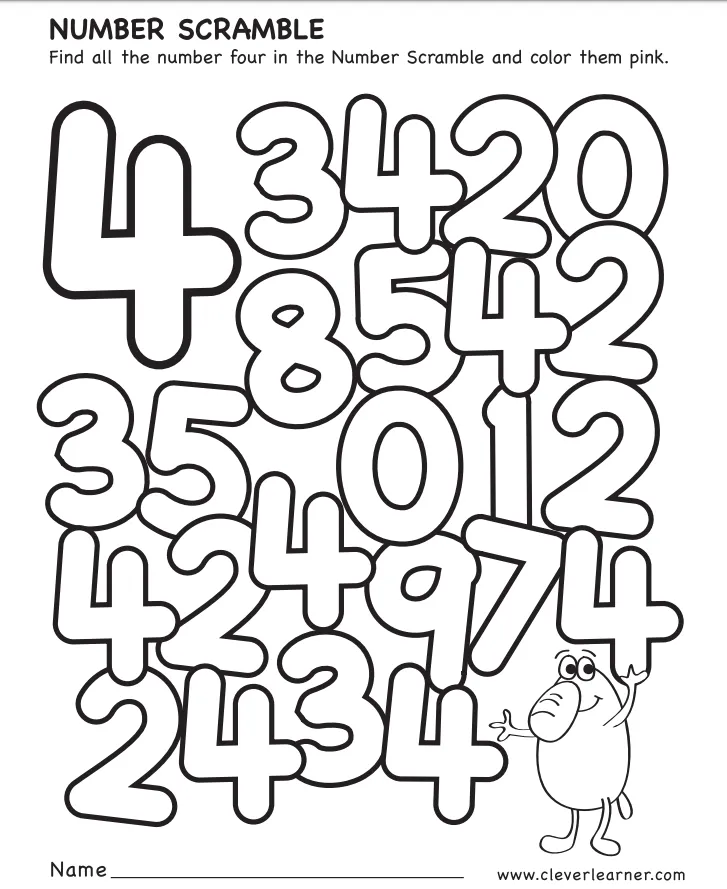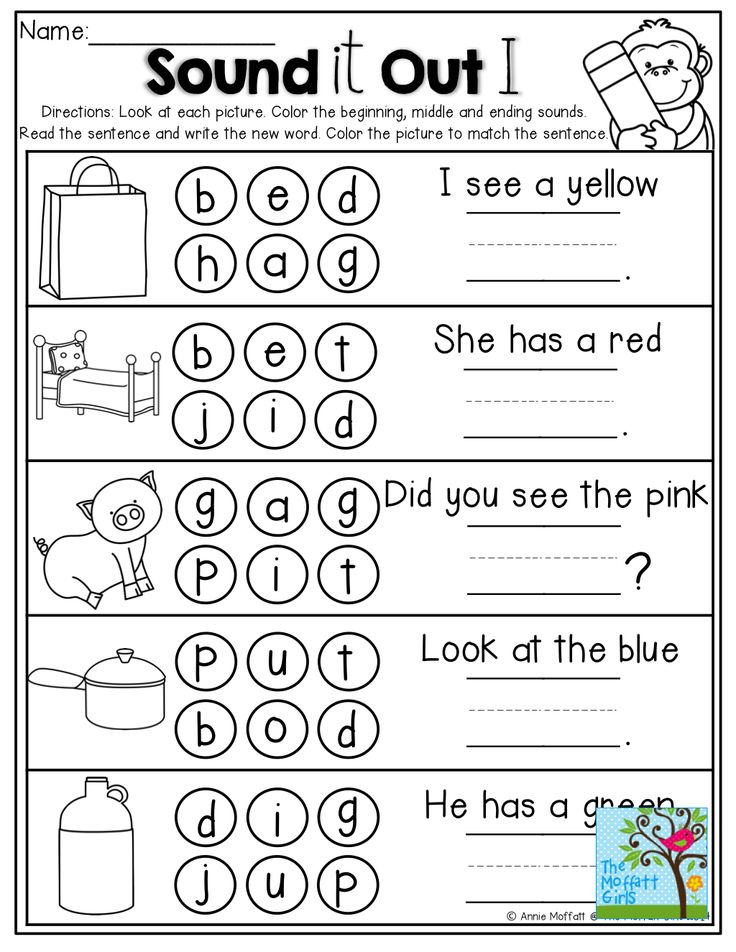Colors for kids learning
How To Help Your Young Child Learn Colors
What are some fun ways to teach colors for kids? If this is a question you’ve been asking yourself, you’ve come to the right place.
As a toddler or preschooler, your child has definitely noticed all the different hues in the world around them, but now it’s time to help them make sense of it all.
Fortunately, teaching your child colors doesn’t have to be an overwhelming task. As you will see below, this can be a fun and engaging learning experience for both you and your child.
With a bit of planning and creativity, your young learner will soon know all the colors of the rainbow and so much more!
Table of Contents
- Why Is Learning Colors For Kids Important?
- Tips To Keep In Mind
- 10 Simple Activities To Teach Colors For Kids
- Make Every Day A Colorful Day
Why Is Learning Colors For Kids Important?
Our world is made up of different shapes and colors. Cars, houses, flowers, trees, buses, fruits, tall city buildings…everything has its own unique visual characteristics.
Before they were even a year old, your child noticed these things, too, but of course, none of it made sense. Now that they are older, it’s time to start piecing together all the information from their environment.
Teaching your child colors will help them make sense of the world around them. But did you know that understanding colors can also impact language skills and overall learning?
It’s true! As your child begins to understand that words represent objects, they’ll also realize that some words can describe certain features of those objects.
For example, blue can describe the sky, a blueberry, and a blue crayon. As your child starts to use color words to describe the things around them, they are also building their vocabulary and becoming better communicators.
But language isn’t the only academic skill built through lessons on colors for kids. Perhaps the most surprising of all is how learning colors can help introduce children to basic math skills. How?
Remember that every time you introduce your young learner to a new color, their brain actively works to process the information. A lot of organizing, categorizing, and comparison takes place when sorting different colors and shapes.
A lot of organizing, categorizing, and comparison takes place when sorting different colors and shapes.
Examining something and identifying attributes, such as color, is an essential skill for math. So, in the future, when they’re trying to tell if a shape is an octagon or a hexagon, they’ll use the same visual discrimination skills they learned when learning colors.
(Note: If your child seems to have trouble distinguishing colors, they may be color blind. Contrary to popular belief, that doesn’t necessarily mean they don’t see colors at all, but it can make school more difficult for them down the road [i.e., reading off a chalkboard].
If you suspect your child may be color blind, ask your child’s pediatrician or eye doctor about getting them tested.)
Now that you’re clear on all the incredible benefits of teaching colors for kids, you probably want to start helping your child master them!
Before we get started on that, here are some basic tips to keep in mind when practicing colors with your child.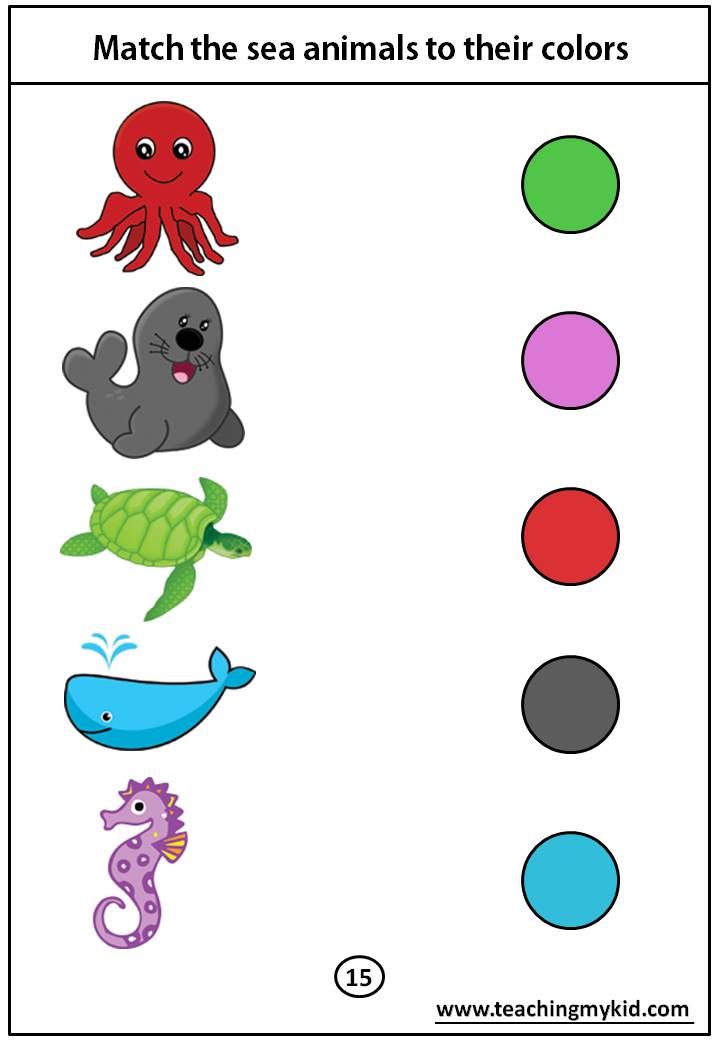
Tips To Keep In Mind
It can be challenging to teach colors to a toddler simply because there are so many contrasting colors constantly around us.
Adding to that challenge is the fact that many different shades of one color exist. For example, there are several reds (think: maroon, crimson, scarlet, etc.), but they are all called “red.” This can be tricky for children learning colors.
Have no fear! We’re here to help. The following are some basic tips to keep in mind as you help your young learner understand colors.
1) Start With The Basics
Think about how we can quickly calculate our change after buying something at a store or spell a new word correctly after hearing it for the first time. This is possible because we understand the basics of math and the English language.
The same approach needs to be applied when teaching colors for kids. It’s best to start with the primary colors (red, blue, and yellow), and once your child gets comfortable with these, move on to other hues.
If you’re still in the primary colors stage, what simple efforts can you take to help emphasize these colors in your everyday life?
Here are a few examples:
- When you’re having dinner — “Do you want to use this blue plate?”
- When you’re taking the dog for a walk — “Look at that yellow car.”
- When it’s time to play — Hand them only red, blue, and yellow objects. If they have building blocks, ask them to sort only the red, blue, and yellow blocks.
Once your child is familiar with their primary colors, you can move on to other basic colors, such as green, orange, purple, black, white, brown, and gray.
A great way to help children learn about colors is by interacting with them. We love this sensory game that lets kids practice naming colors and discover what happens when you combine them.
2) Choose Contrasting Colors For Kids
As we mentioned earlier, there are so many different colors in this world that sometimes children can find it challenging to tell them apart. It’s even more difficult when the colors are similar (e.g., red, maroon, orange, etc.).
It’s even more difficult when the colors are similar (e.g., red, maroon, orange, etc.).
For this reason, it’s best to first focus on the hues that are clearly distinguishable before introducing similar colors.
3) Help Them See Color Categories
Once you’re confident that your child knows their basic colors, you can start introducing similar colors (olive green, forest green, etc.). Most of these can be found in the world around you.
As explained, similar shades can be challenging to learn, so in the beginning, the focus shouldn’t be on having them learn all the different terms but, rather, exposing them to the idea of categories.
To help your child recognize the differences between shades, point out an object and name its color. Then, ask them to find other things that are the same color. For example, you could say, “This is a blue sock. Can you find me anything else that’s blue?”
When they find another blue object, talk about what you notice. For example, is the blue the same on both things, or are there differences? Is one lighter or darker than the other? Do either look like a brighter blue?
These simple conversations can help your child as they begin expanding their definition of the color blue.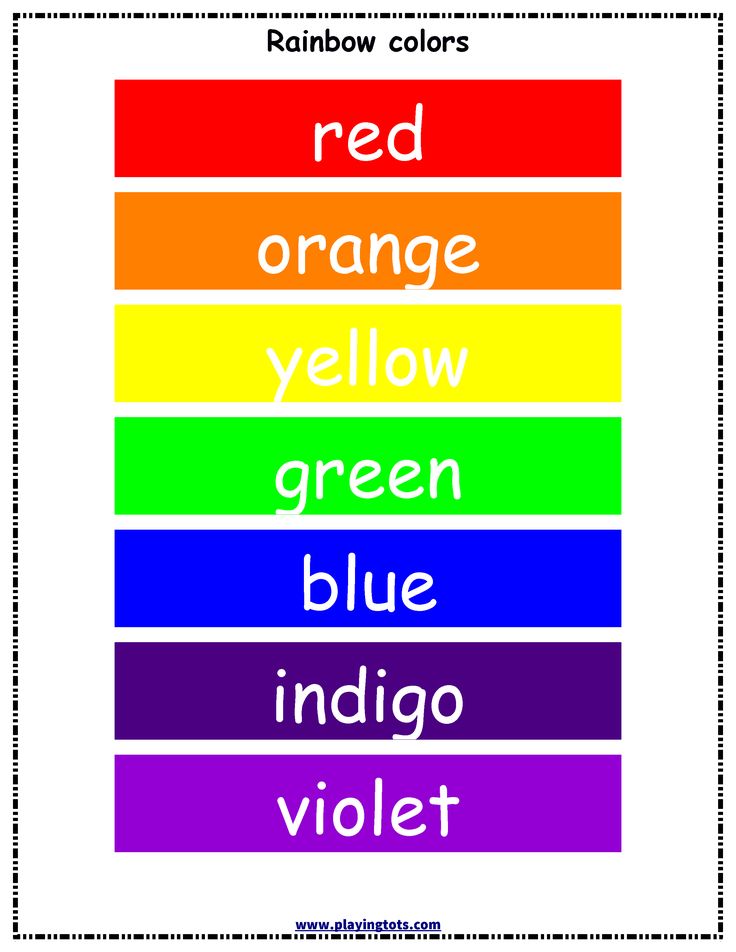
4) Point Out The Connection Between Colors And Feelings
In English, colors aren’t only used to describe how something looks. We also use color terms to express our emotions.
For example, when we say somebody is “feeling blue,” they’re sad. Similarly, if someone is “seeing red,” they’re angry.
While you don’t need to detail the emotions associated with each color at this age, you can make your child aware that feelings and colors are connected.
They can start to use colors to express themselves, a skill that helps them better understand their emotions. This ability is one of the social-emotional topics your child can practice with the Learn with Sesame Street app, powered by HOMER.
10 Simple Activities To Teach Colors For Kids
Learning about colors can be a wonderful part of playtime with your child. To help your child practice their colors, use these engaging activities.
1) Colorful Necklace
Children are often curious and enjoy exploring different colors and materials. This means that when teaching them about colors, the more engaging the activity the better — like using colorful beads to create necklaces.
This means that when teaching them about colors, the more engaging the activity the better — like using colorful beads to create necklaces.
What You’ll Need:
- Colorful beads (in primary colors)
- Yarn or necklace string
What To Do:
After teaching your child the primary colors, try creating a red, blue, and yellow necklace. Tie a knot on one end of the string. Then, show your child how to string beads onto it.
This necklace can be in a pattern or not. It’s really up to you!
When creating the necklace, remember to name the colors you use and encourage your young learner to repeat them.
Note: While working with small items, it’s essential to use safe and non-toxic materials and keep an eye on your young child at all times.
2) Finger Painting
Engaging your child’s senses is one of the most effective ways to help them learn new concepts. That’s what makes finger painting so great for teaching colors!
What You’ll Need:
- Finger paint (in primary colors)
- Finger paint paper
- Newspaper
What To Do
Put a few pieces of newspaper on your table to protect it from spills.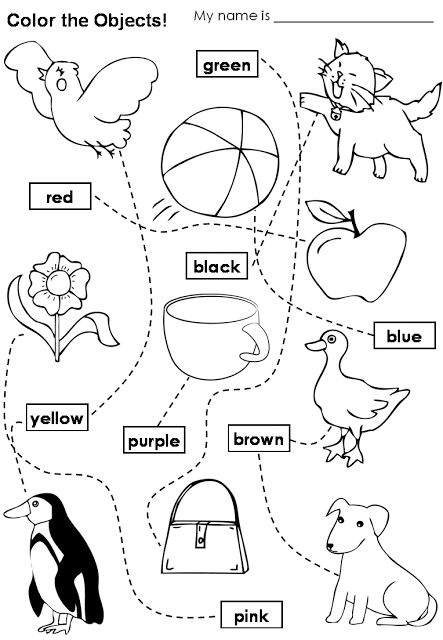 Then, place your child’s finger painting paper on top.
Then, place your child’s finger painting paper on top.
Let them go to town using their fingers to create beautiful, colorful pictures. You can use the three primary colors in finger painting and mix them up to form secondary colors (purple, green, and orange).
During the activity, speak about the colors your child is using and the colors that are formed while mixing.
Once the painting is complete, let them tell you about what they created. Encourage them to use color words while they’re describing the artwork.
3) Same Objects, Different Colors
As you teach your child different colors, they may begin associating certain colors with specific objects. For example, if you show your child a red apple, they may associate the shape of the apple with red.
It’s essential to show your child another color apple (e.g. a green one) so they understand that you’re referring to the color of the object, not the object itself. This activity helps you do just that.
What You’ll Need:
- Two or more objects that are the same except for their color (such as apples, blocks, crayons, etc.)
What To Do:
Hand your child one of the objects and ask, “What color is this?” Once they answer, you can ask, “Are all (objects) this color?”
This will help them start thinking about colors in the world around them. If they aren’t sure, hand them the other object and ask them what it is. Reinforce that it’s the same type of thing as the first one, but it’s in a different color.
To help them further understand, sorting activities can be effective. For example, ask your child to sort the different colors of the same object (e.g., multi-color blocks).
As they get older, you can also encourage them to sort by the object, regardless of color. This will help your child continue developing skills of categorizing.
4) Read About Colors
There are lots of amazing children’s books that speak about colors. While reading to your child, be sure to point out all the colors in the book.
What You’ll Need:
- Books about colors (use your favorite or see our recommendations below)
What To Do:
Grab a book about colors and read it aloud to your child. As you go through each page, talk about the colors you see. Then, you can ask your child to point to things that are different colors. For instance, you can say, “Do you see anything orange on this page?”
This teaches your child to scan the entire picture and focus on the details. As they look for one specific color, they’re practicing their visual discrimination skills, which they’ll use throughout their lives.
Here is a list of some incredible books that will help bring fun and entertainment into learning about colors:
- Brown Bear, Brown Bear, What Do You See?
- A Color of His Own
- The Day the Crayons Quit
- Baby, See the Colors!
- What Makes a Rainbow?
However, don’t feel limited to reading only books about colors. You can talk about the different hues on the pages of any picture book.
You can talk about the different hues on the pages of any picture book.
5) Create A Color Mixing Sensory Activity
When your child uses their senses while they’re learning, they create stronger neural connections, and this helps them better remember the information.
This activity also gives your child a chance to explore colors creatively. It allows them to experiment and see what happens when combining two colors.
What You’ll Need:
- Icing or shaving cream
- Food coloring
- Two small bows
- Toothpick or spatula
- Large zip-top bag and tape, or cookie sheet (The cookie sheet option is more tactile. However, you can opt for the bag if you’re looking for low-mess.)
What To Do:
Start by filling your zip-top bag with icing or shaving cream. Next, choose two colors of food coloring and add each color into the bag. Tape it down to a working surface. Your child will then need to mix the colors with their little fingers.
Grab the two small bowls and put icing or shaving cream into them. Add one to three drops of color into the bowl and fold the color into the icing or cream.
You can then scoop the colored icing or cream into the bag or onto the cookie sheet and let your child mix the colors.
This is a fun activity to help children learn that colors are not necessarily stagnant, and mixing them will help produce a different color.
See more details here!
6) Sing Color Songs
Kids love to sing along to fun songs. You can take advantage of this natural love for singing to help your child learn about colors. And the best part is that these silly songs are usually pretty catchy, so your child will likely sing them long after the activity ends.
What You’ll Need:
- A way to play a song for your child to listen to (such as your phone or a computer)
What To Do:
Play a song for your child and start singing the lyrics. Then, repeat it a couple of times to help them learn how it goes.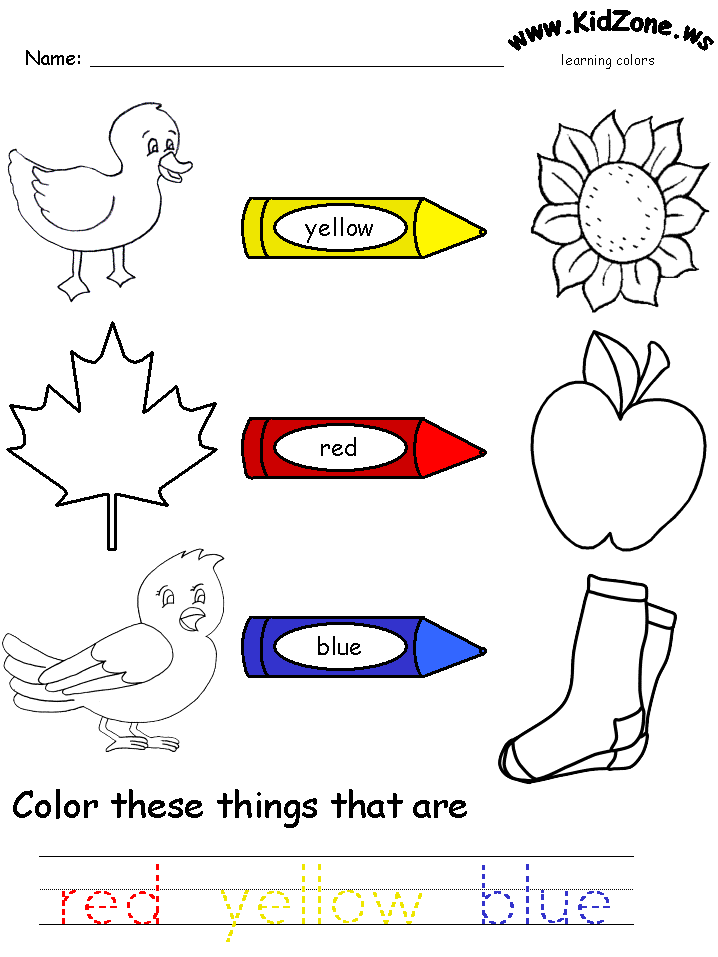
Once they know the words, you can sing the song anywhere to review colors for kids on the go.
Not sure where to start? Check out our fun activity here that helps teach children pantone colors.
You can also sing some of our favorite songs:
- “It’s Not Easy Being Green” by Kermit the Frog
- “The Color Song” by Bryant Oden
- “Colors of Our Clothes” by David Burba and Lisa Campbell
- “Colors All Around” by Jack Hartmann
- “Jenny Jenkins” by Lisa Loeb
- PANTONE Colors: The Song
You can find these songs on YouTube, or search our Learn & Grow app. Happy singing!
7) I Spy Colors For Kids
This classic game is perfect for teaching colors to kids. Since it doesn’t require any materials, you can play it anywhere.
What You’ll Need:
- Nothing!
What To Do:
Look around you at all the different colors. Then, secretly pick out one object that only has one main color. Tell your child, “I spy something (insert color here).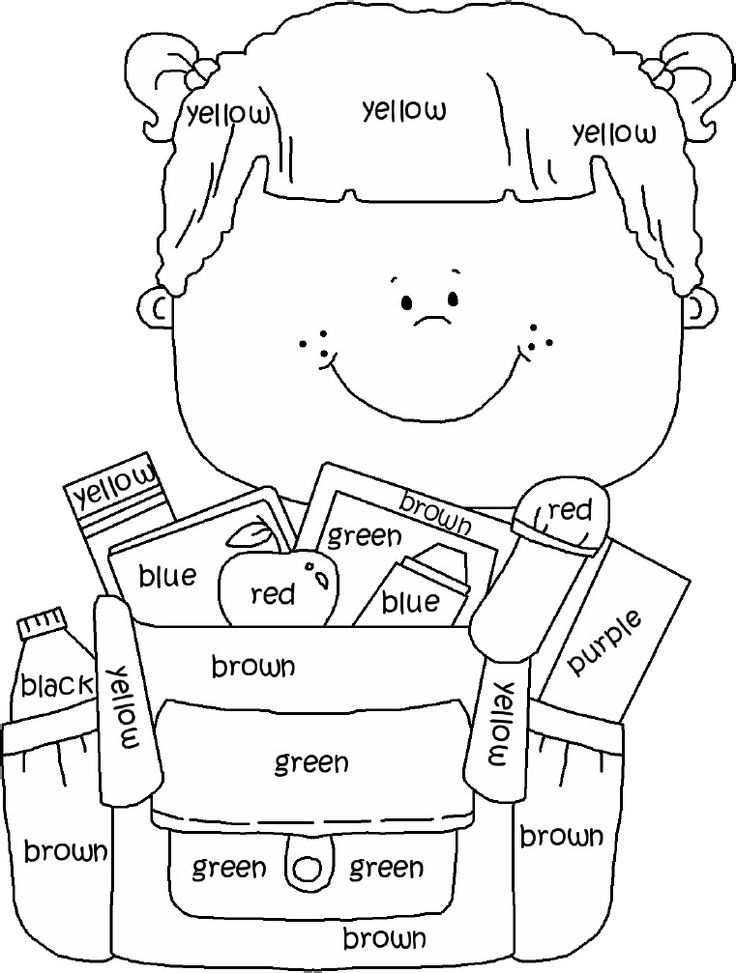 ”
”
For example, you might say, “I spy something blue,” if you’re looking at a blue shirt. If your child correctly guesses the object, then it’s their turn to pick the next thing and give a clue about its color.
8) Tell A Colorful Story
Encourage your child to use the magnets from the HOMER Explore Letters Kit creatively. Have them use the pieces to tell a story and remind them to add some color words to their telling.
What You’ll Need:
- Explore Letters Kit from HOMER
What To Do:
Set up the magnetic story box so it’s ready to go. Go through the magnets and pick out a few that you could use to tell a fun story.
Using the pieces and the magnet backdrop, tell your child a story. As you speak, remember to weave some color words into the tale. For instance, you might say, “The bright pink flamingo decided he wanted to play ball with the brown monkey.”
You’re modeling the activity for your child as you tell a story. When you finish, let them tell a story of their own. You might notice they simply copy your story at first, and that’s okay.
You might notice they simply copy your story at first, and that’s okay.
Keep playing, and it won’t take long before your child can tell a story all their own.
9) Make A Picture
This activity is perfect for a rainy day. It’s a fun way for creative kids to practice making something with colorful paper strips.
What You’ll Need:
- Construction paper in all sorts of colors
- Scissors
- Glue or tape
- A white sheet of paper
What To Do:
If your child knows scissor safety skills, have them cut the construction paper into strips of different colors. (Otherwise, you cut them.) The strips can all be the same width, or you can mix them up.
Once you have a nice pile of colorful strips, invite your child to glue or tape them onto the white sheet of paper to create a design of their choice. When they are done, talk to them about their colorful picture and have them tell you all about what they created.
Mix things up the next time you do this activity by using circles, squares, or various shapes at once instead of strips.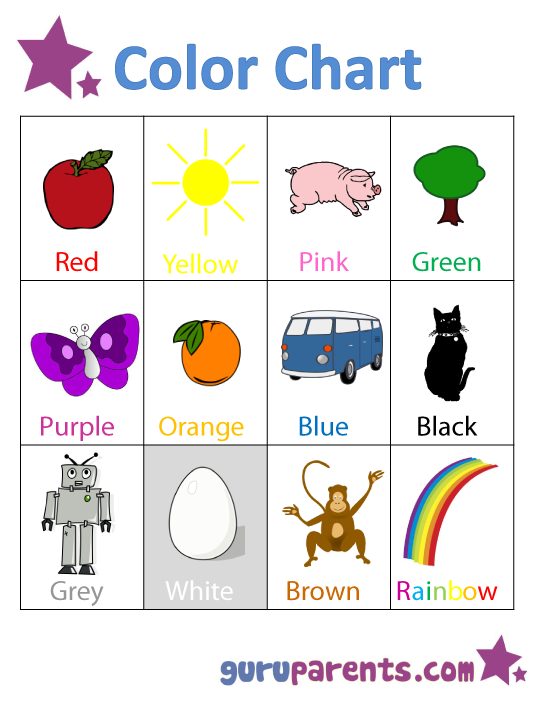
10) Design A Color Scavenger Hunt
This activity is perfect for kids who love to move around. It’s also a great way to review all the different colors they’ve learned.
What You’ll Need:
- A sheet of blank paper
- Colored pencils or crayons
- A pencil or pen
- A basket or bag
What To Do:
Create a scavenger hunt for your child by drawing boxes on a blank sheet of paper with colored pencils or crayons. Fill in each box with the color it represents to make it easy for your child to identify it.
Quickly review the colors with your child. Point to each box on the sheet and have them tell you the color.
Then, challenge them to find an object around the house for each color. Once they find something, have them put it into the basket or bag. Next, show them how to use the pencil or pen to put an X or a check through the color box they found.
Have them continue searching for items until they have a basket or bag full of colorful objects.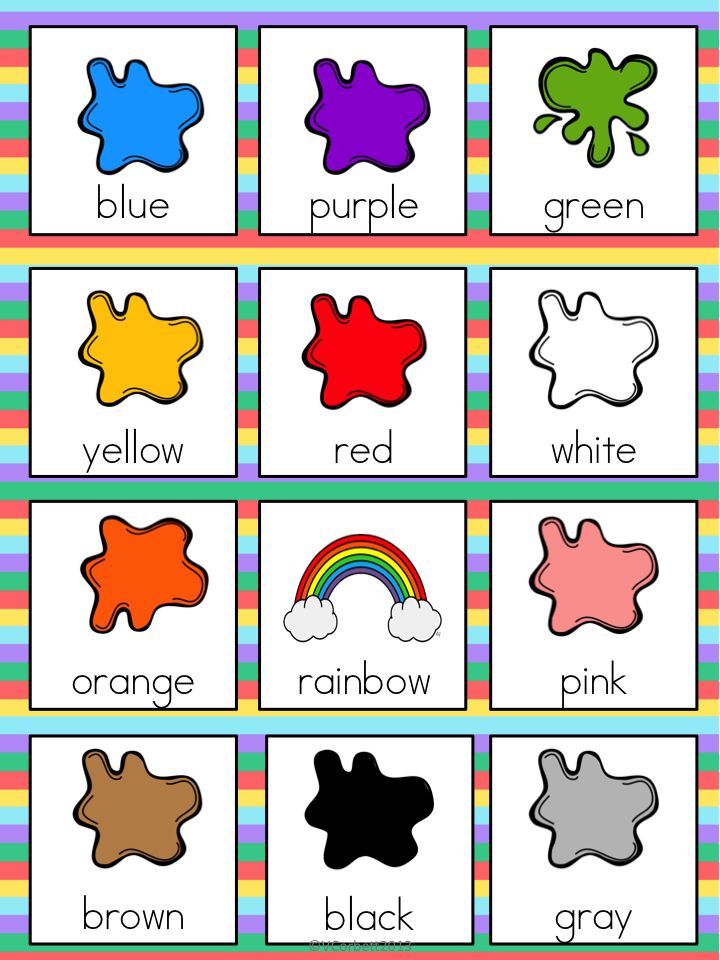 Take time to have them tell you the color of each thing they found.
Take time to have them tell you the color of each thing they found.
Make Every Day A Colorful Day
Colors are all around us, and your child has most likely already noticed these different hues without tagging them with color names. However, colors for kids are an important part of childhood development and math prep.
This is where you come in. Armed with the activities above, you can help make learning about colors fun and exciting.
When teaching colors for kids, remember to start with the primary hues and then gradually introduce more. With patience, your young learner will soon recognize all the colors of the rainbow — and so many more!
For more fun learning activities, check out the Learn & Grow app, powered by HOMER.
Author
Colors & Shapes - Learn Color on the App Store
Description
A free game for kids that teaches colors and shapes through fun learning games!
When you look out the window, what do you see? Colors and shapes, green trees, square windows, a whole world of things to identify! Colors and Shapes is a fun and educational game for preschool children that helps teach object matching and color recognition skills.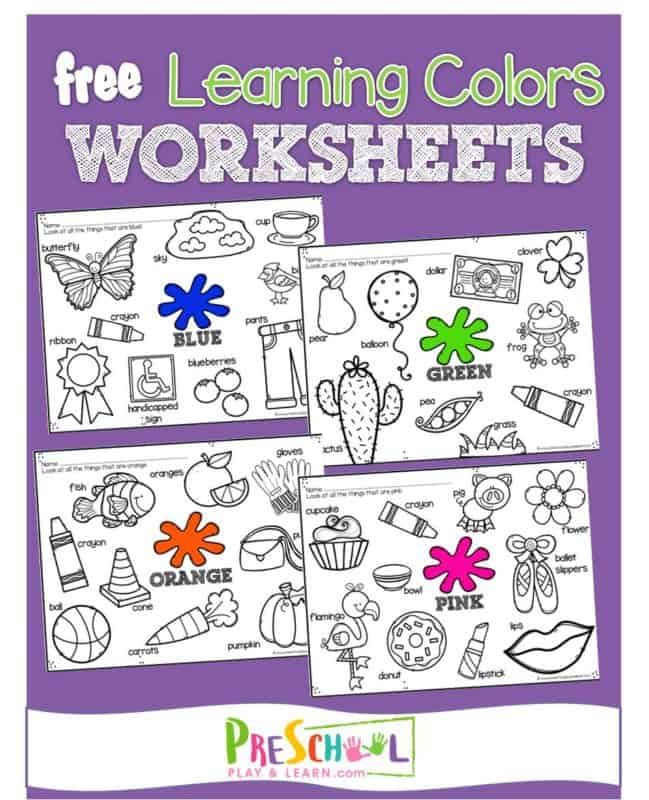 It's a beautiful world out there. Help your children learn to recognize and draw it!
It's a beautiful world out there. Help your children learn to recognize and draw it!
Colors and Shapes focuses on basic tracing, matching, and building skills kindergarten kids need to train. It features a number of unique mini-games designed to increase a child's ability to recognize and match shapes, identify and pair up colours, and even solve puzzles through simple touch screen interactions. It's incredibly easy to use and provides a fun learning environment kids will love.
Colors and Shapes includes the following mini-games:
1. Painting - Kids love colouring games! Fill in the blank objects with all kinds of fun paint, then identify the objects one by one. A fun way for children to recognize colours and shapes.
2. Collecting - A fun and challenging game where children tap the correct colored objects and gather them in a basket!
3. Look-alikes - Match up the different items by picking the ones with the same colour. A challenging but fun way to learn colours and drawing skills.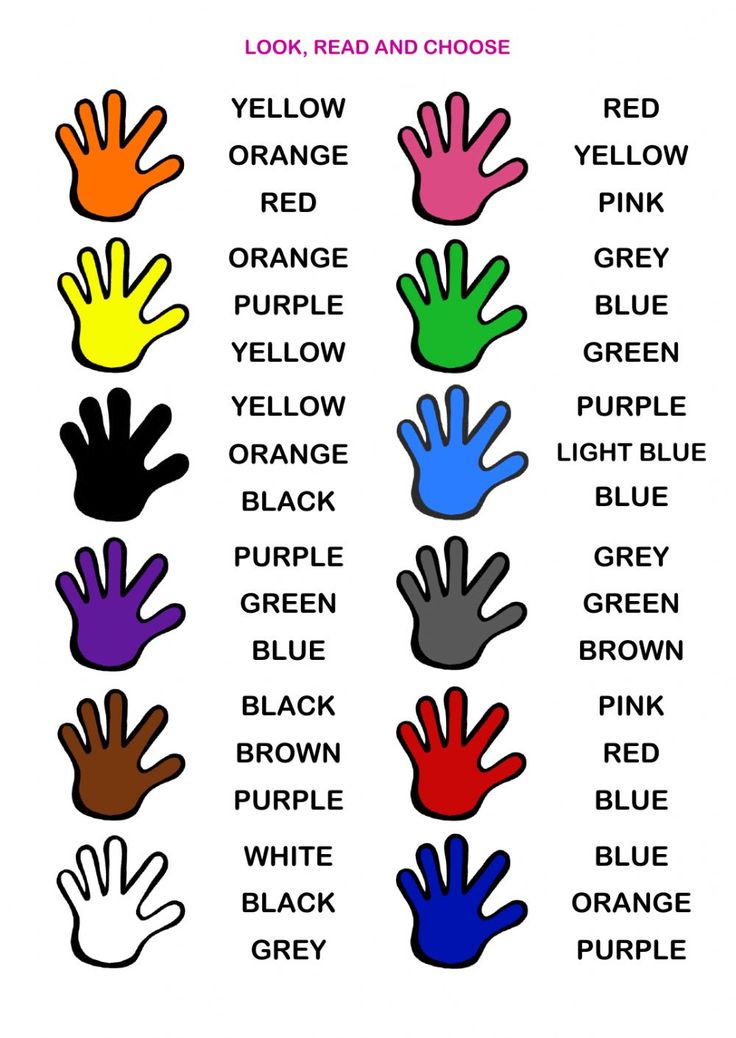
4. Matching - Outlines are at the top of the screen, and a handful of shapes are at the bottom. Challenge your kids to match them up!
5. Tracing - Help your kids trace shapes by following the outline on the screen. Great for teaching shape patterns and recognition.
6. Building - Drag and drop animated pieces on the screen to create a shape in the middle.
Colors & Shapes - Learn Coloring For Toddler Kids is a great learning experience for toddlers, preschoolers, kindergarteners, and children of all ages. Parents will appreciate the customizable difficulty settings. Kids will have a great time learning to recognize different colors and shapes, completing all of the mini-games, and earning sticker rewards!
Best of all, Colors and Shapes is absolutely free! No annoying third party ads, no in-app purchases, just pure educational fun for you and your family.
Note to Parents:
When creating Colors and Shapes, we wanted to create the most entertaining and educational game possible for both parents and their children. We're parents ourselves, and we know how frustrating intrusive third party ads and in-app purchases can be. That's why we decided to release this game for free. You and your child can enjoy an uninterrupted learning experience without having to worry about micro-transactions and the like. Just sit down and start learning. It's exactly the sort of educational experience we want for our children, which is why we know your family will love it, too!
We're parents ourselves, and we know how frustrating intrusive third party ads and in-app purchases can be. That's why we decided to release this game for free. You and your child can enjoy an uninterrupted learning experience without having to worry about micro-transactions and the like. Just sit down and start learning. It's exactly the sort of educational experience we want for our children, which is why we know your family will love it, too!
Best wishes from the parents at RV AppStudios
Version 1.3.9
New in this update:
- Performance improvements
- Small bug fixes
- New rewards & animations
Ratings and Reviews
845 Ratings
Replaced our subscription app!
We have all these educational apps and they are great for both the 2 yr old and 4 yr old.
I love the variety of settings I can choose to customize the learning experience and that both kids can have their own profiles.
There are a few dialect/pronunciation ‘quirks.’ Today I noticed “oinch” instead of orange. I have heard this regional pronunciation before, but it’s still strange. Also, kids can’t easily navigate around the app. The activities are labeled with words instead of icons so it can be hard for my kids to communicate what activity they want to do. You have to hold and swipe to get back to the main menu. Great for keeping kids where you want them if you only want them in one activity. However I let my kids choose how they use their time. There are little to no stopping points within each activity, like you find in almost any other game. My kids eventually want to try different things. They get frustrated I have to do it for them. Still FIVE stars
For the developers:
1. The arrow to advance to the next page is sometimes hard to hit for adults, let alone kids.A larger, more centrally located button would be more intuitive.
2. Icons to label activities
3. Add/increase stopping points
4. Allow adults to turn off the “lock” on the exit feature
5. Consider combining activities in one app so there is an interdisciplinary option.
Thanks for you your great games:)
Great apps for 3 year old
My 3 year old loves the app and the other ones in this developer’s series. Cute graphics and fun for preschoolers. Love the encouragement from the characters (“good job! I believe in you!”). My review is an update after the sound was “fixed”. If your app sound doesn’t work, make sure the sound is NOT toggled off/muted. On an iPad, it’s very easy for a preschooler to mess around and turn off the noise even though you can turn up the volume and hear other apps. So strange. Anyway, download this app if you have a preschooler, you child will love it and so will you.

It seems that the ringer/silent switch on your iPhone is enabled, please make it disable to get the sound. Hopefully, this will fix the issue. Please update review and rating from 3 star if this fixes the issue. 🙏 Every review from parents matters to us since this is a passion project. :)
Satisfied
I would highly recommend this to everyone who a young one. Imagine you can even change the language. My granddaughter is 18 months and I have been doing this for 2 months and she identifies 3/4 of her alphabet and numbers Furthermore she can trace them With her fingers
The developer, RV AppStudios LLC, indicated that the app’s privacy practices may include handling of data as described below. For more information, see the developer’s privacy policy.
Data Not Collected
The developer does not collect any data from this app.
Privacy practices may vary, for example, based on the features you use or your age. Learn More
Information
- Seller
- RV AppStudios LLC
- Size
- 159.8 MB
- Category
- Education
- Age Rating
- 4+, Made for Ages 0–5
- Copyright
- © 2022 RV AppStudios
- Price
- Free
- Developer Website
- App Support
- Privacy Policy
More By This Developer
You Might Also Like
Learning colors: how to teach a child to distinguish colors and shades
It is generally accepted that by the age of three a child should learn to distinguish between primary colors. This skill is an important part of sensory development, it gives the child the opportunity to see the world in a new way. Often, if the baby does not know or confuse colors, parents have concerns about the pace of development of the child. Do I need to worry if the study of colors is not easy for a child? How to teach a child to distinguish colors? You will find answers to these questions in our article.
This skill is an important part of sensory development, it gives the child the opportunity to see the world in a new way. Often, if the baby does not know or confuse colors, parents have concerns about the pace of development of the child. Do I need to worry if the study of colors is not easy for a child? How to teach a child to distinguish colors? You will find answers to these questions in our article.
At what age does a child begin to see colors?
Studies have shown that children begin to perceive colors by 2-3 months. The first colors a child sees are yellow, orange, red, green. At this age, babies can already react differently to their toys of different colors (for example, a red rattle can please a child more than a blue one), look at bright pictures with enthusiasm. The baby's world quickly acquires colors, but if we talk about the ability to consciously find an object of the right color, then usually it appears in children at the age of one and a half. It is at this age that it is optimal to start learning colors in a playful way. You can voice the names of flowers to a child for up to a year, this will only benefit him. But do not demand too much from the baby, remember that his brain is actively developing, and as soon as the time comes, you will certainly see the results.
You can voice the names of flowers to a child for up to a year, this will only benefit him. But do not demand too much from the baby, remember that his brain is actively developing, and as soon as the time comes, you will certainly see the results.
To see if your child is ready to learn colors by playing with building blocks, ask your child to point to a part that is the same color as yours. If the baby can find objects of the same color, then he is quite ready to memorize the names of colors.
Learning colors in everyday life
Children get most of their knowledge about the world in everyday life: communicating with adults and peers, observing nature, playing. The study of flowers is no exception. Sometimes a child does not need to do special exercises to learn to recognize colors. For this, it is enough that he hears the name of the color and associates it with a specific thing. During daily activities, voice for the child what color the objects are around. Whether you are drawing, playing with blocks, looking at cars in the yard, reading, swimming, eating, dressing - in each of these situations, you can gently teach your child to distinguish colors.
Whether you are drawing, playing with blocks, looking at cars in the yard, reading, swimming, eating, dressing - in each of these situations, you can gently teach your child to distinguish colors.
It is important that the study of colors does not turn into torture. You should not constantly test the child's knowledge by asking him which color is which. Soon the baby may just start to ignore you. “Let's paint the sun yellow!”, “What a delicious green cucumber!”, “Oh, where did the blue cube go? Here he is!" are examples of how you can gently help your child remember colors.
Games for learning colors and their shades
In order to get your baby interested in learning colors or to reinforce the knowledge they already have, you can offer your child to play special “color” games.
Color Sorting
Sorting games are designed to help children learn to group objects by color.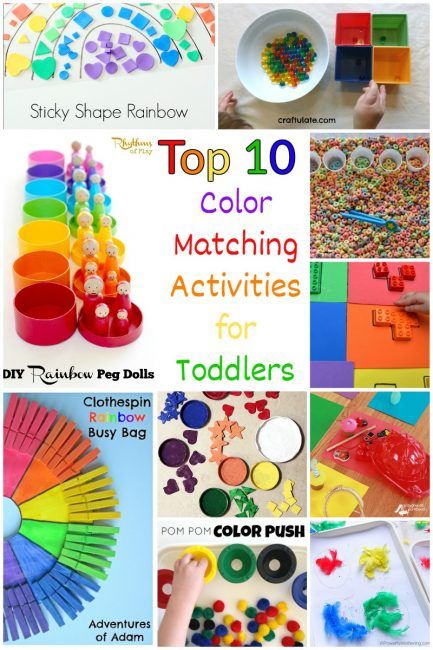 Any materials at hand can be items for sorting: toys, covers, designer parts, cubes, buttons, cereals, pencils, etc. You can organize the game in various ways:
Any materials at hand can be items for sorting: toys, covers, designer parts, cubes, buttons, cereals, pencils, etc. You can organize the game in various ways:
You can come up with as many options for sorting by color, it all depends on your imagination. So that the child does not lose interest in the task, connect the plot of the game with his favorite characters, toys (for example, a cat will eat from a yellow bowl, and a baby elephant from a red one, etc.).
Match a Pair
Help your child learn colors with the Match a Pair series. Ask your child to find a petal for a bug, a pot for a flower, a roof for a house, etc. You can present the baby with a deliberately wrong option and ask to correct the mistakes.
Pick up a patch
Show the child the picture with the missing details. Ask him to fill in the gaps (this can be done with plasticine, pom-poms, caps, cards, etc.).
Color Lotto
At the age of about one year, children begin to be interested in various lottos.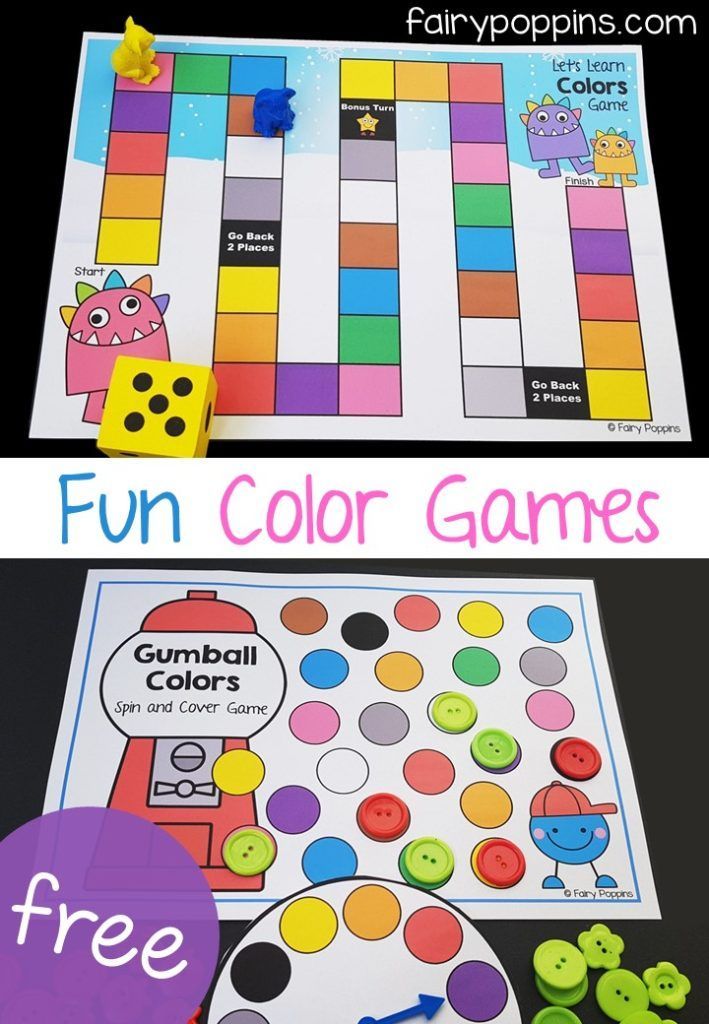 In the color lotto, the task is to collect pictures of the same color on the card.
In the color lotto, the task is to collect pictures of the same color on the card.
Colored Sensory Boxes
Create a sensory box for your baby where everything is the same color. During the game, the child will be able not only to remember the color that he sees, but also to develop fine motor skills, tactile sensitivity, thinking, and imagination.
Color days
This is one of the most interesting and popular ways to teach your child to distinguish colors. Its essence is that during the day (or several days) you draw the child's attention to objects of a certain color. For example, on a yellow day, you can dress in yellow clothes, play with yellow toys, draw a yellow chicken. Surrounded by one color, the baby will easily remember it.
Cards for learning colors
You can learn colors with your child using cards. With the help of Doman's "Colors" cards, you can introduce your baby not only to the main colors, but also to different shades. It is important not to overload the child with unnecessary information about the names of 10 shades of green or red. Learn only those shades whose names you can use in the game and life.
It is important not to overload the child with unnecessary information about the names of 10 shades of green or red. Learn only those shades whose names you can use in the game and life.
Board games for learning colors
Board games are a great way to learn about colors and consolidate knowledge about them. Currently, the stores offer a wide range of similar games for every taste and budget. Choose a game that suits your child.
Educational cartoons
There are many educational cartoons on the Internet that will help your child memorize colors quickly. Here is one of them:
Educational books
If your little one loves to listen to stories and look at pictures, this is the way for you. We all remember the wonderful story of V.G. Suteev "Rooster and paints", by S.Ya. Marshak has a whole “Colorful book”. You can also find many educational books that will become your faithful assistants.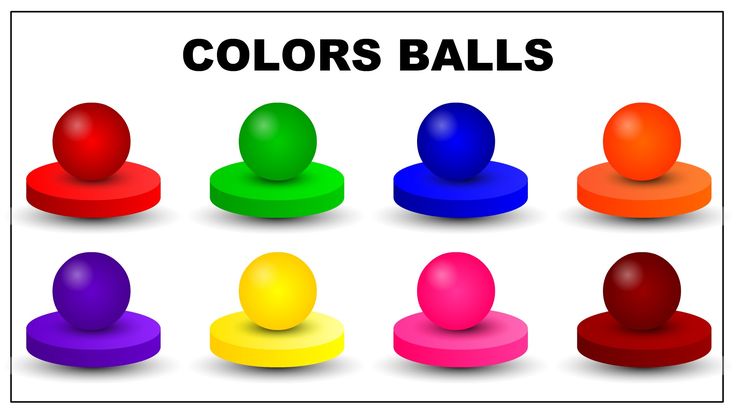
Conclusions
We have listed for you different color learning games. In order for a child to master the concept of color well, it is worth adhering to a number of principles: do not rush the baby, provide a variety of material for games, discuss what you see.
Conclusion
You can start studying colors from an early age, the main thing is that it is interesting for the child. It is impossible to specify clear age limits when a child should learn primary colors. This process, like all development, is individual for each baby. The Sozvezdie Development Center has created a Montessori environment for kids, aimed at the comprehensive development of the child. In the classes "Together with Mom" children in a playful way get acquainted with the concepts of color, shape and size, do thematic creative work. You can learn from our teachers how to interest a child in an activity and how to properly present him with cognitive information. Develop with us!
Prepared by a Montessori teacher
Sokolova Oksana
6 techniques from a pediatric ophthalmologist
Contents
- At what age does a child begin to distinguish colors?
- When should I start teaching flowers?
- Step-by-step work
- First introduction to color
- Learning colors in everyday life
- Visual cards "Learning to mix colors"
- Poems about colors with pictures
- Games for learning colors and their shades
- Learn Colors Puzzle Cards
- Exercises for Toddlers
- Activities with an Older Child
- Continuing Learning
- Ways to Learn Colors with a Child
- Method #1 Creativity Finishing the picture”
- Method No.
 3. “Playing with an interactive toy”
3. “Playing with an interactive toy”
At what age does a child begin to distinguish colors?
Studies have shown that children begin to perceive colors by 2-3 months. The first colors a child sees are yellow, orange, red, green. At this age, babies can already react differently to their toys of different colors (for example, a red rattle can please a child more than a blue one), look at bright pictures with enthusiasm. The baby's world quickly acquires colors, but if we talk about the ability to consciously find an object of the right color, then usually it appears in children at the age of one and a half. It is at this age that it is optimal to start learning colors in a playful way. You can voice the names of flowers to a child for up to a year, this will only benefit him. But do not demand too much from the baby, remember that his brain is actively developing, and as soon as the time comes, you will certainly see the results.
To see if your child is ready to learn colors by playing with building blocks, ask your child to point to a piece of the same color as yours.
If the baby can find objects of the same color, then he is quite ready to memorize the names of colors.
When should I start teaching colors?
By the first 2-3 months of life, a child begins to distinguish red. This is due to the fact that cones (special elements of the retina of the eye) that are sensitive to the long-wavelength part of the light spectrum are the first to start working.
At 1 year old, a baby can distinguish 3 simple colors - red, yellow, blue and 1 complex - green. However, it is still difficult to check what exactly a one-year-old peanut sees. In each case, everything depends on the development of speech and thinking.
You should actively start learning colors with a 1-year-old baby, but children can memorize and distinguish only from 2-3 years old, when an active cognitive interest appears.
Step-by-step work
Start with basic options like yellow and red, they are easier for the child. The following table shows the stages of the learning process by age.
The following table shows the stages of the learning process by age.
| The age of the baby, years | Available Forms | Recommended duration, min | 1-1.5 | MASS can not only be called the subject itself. You can hang a multi-colored bright rattle over the crib and repeat the color of its elements every day, touching them one by one. With seeming futility, this activity helps the child to gradually memorize his mother's words, so that later he can begin to use them. | 2-5 |
| 1.5-2 | The repetition of colors continues, and it is important to use active listening. So, mom can ask the baby to bring her a red ball. It will be useful to draw with finger paints or crayons, while the adult names what shade the kid uses for creativity. | Up to 10 |
| 2-3 | Spectrum learning enters the active stage.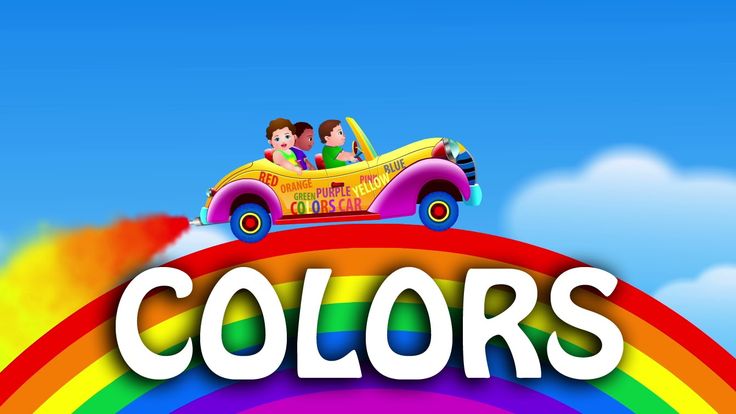 You can use Gyenesh blocks, invite the baby to classify objects by color, find something superfluous. You can use Gyenesh blocks, invite the baby to classify objects by color, find something superfluous. | 10-20 |
| 3-4 | Exploring colors and their shades in a playful way. | 20-30 |
Each lesson should turn into a little holiday for the kid, so you can safely use games, turn on his favorite music. The main thing is that the child cannot be overworked, it is permissible to study for only two minutes, but several times a day - this will be much more productive than boring memorization and repeated repetition.
First acquaintance with color
First of all, the child must remember the primary colors: red, yellow, blue and green. It is necessary to teach the baby to distinguish colors consistently and gradually.
Red
Find red items
Look at the pictures with your child. Name them. Slowly find red items in the pictures. Then, together with the child, look for red objects around: at home, on the street.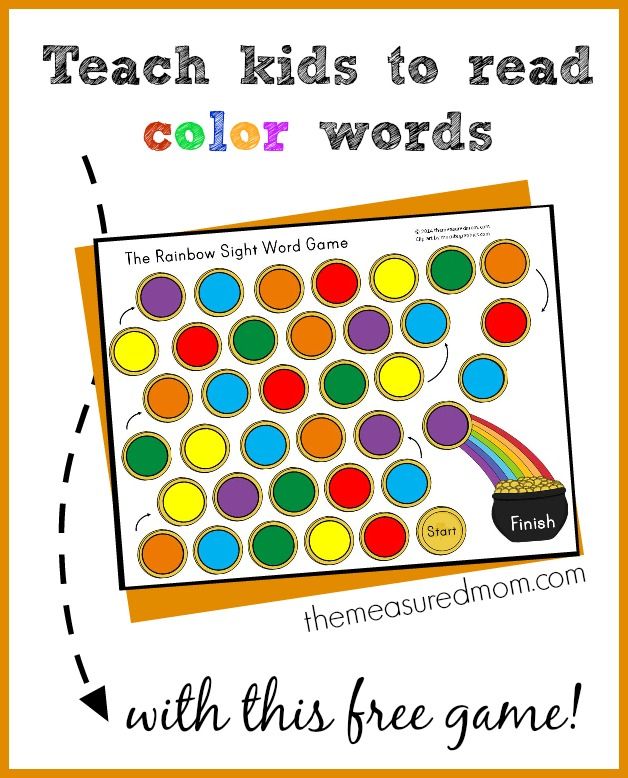 And only when the baby will clearly find and name objects of red color, you can move on to yellow.
And only when the baby will clearly find and name objects of red color, you can move on to yellow.
Yellow color
Learning to distinguish red and yellow colors
Ask the child to show an object of a certain color in the pictures, for example: - Show a red pencil. Now show the yellow pencil, etc. Explain to the baby why the chicken is drawn only in yellow.
Green color
Learning to distinguish red, yellow and green colors
Ask the child: “Show me what is red in the picture? Find what's green. Choose what's yellow." Offer your child a more difficult version of the game. Pointing to the picture, ask: “What tomato? What is a pear? ”, Encouraging the child to pronounce the names of flowers.
Blue
Learning to distinguish between green and blue
Ask the child: “Show me what is blue.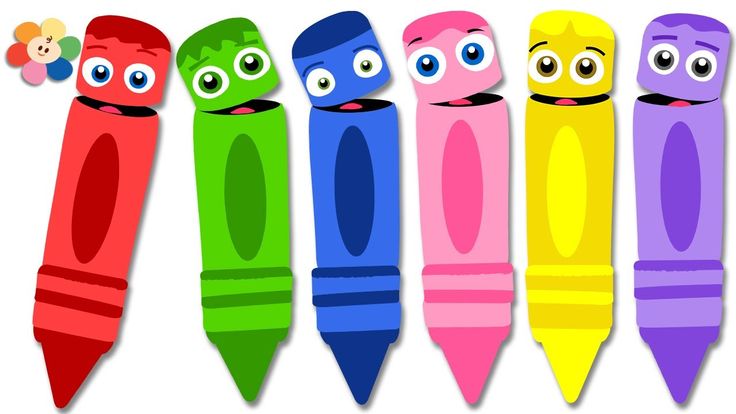 Find everything green.
Find everything green.
Learning to distinguish red, yellow, green and blue colors
Ask the child: “Show me and say what is red. What is blue? What's green? What is yellow? Tell me what color the cube is. What color is the scoop?
Arrange in boxes
Look at the pictures with your baby. Ask to find red, green, blue and yellow boxes. Draw the child's attention to the objects in the frame. They need to be put away. Ask the kid: “Where do you think we will put the bow?” If the child shows correctly (red bow in a red box), take a pencil and connect the bow and box together with a line. If the task causes difficulty, show the baby a bow and ask: “Where is the same box?”
Pick clothes for the dolls
Say to the child, "Let's help the dolls get dressed." Draw the baby's attention to the doll with the red bow and ask: "What coat do you think this doll will wear?" Connect the doll and coat of the corresponding color with a pencil.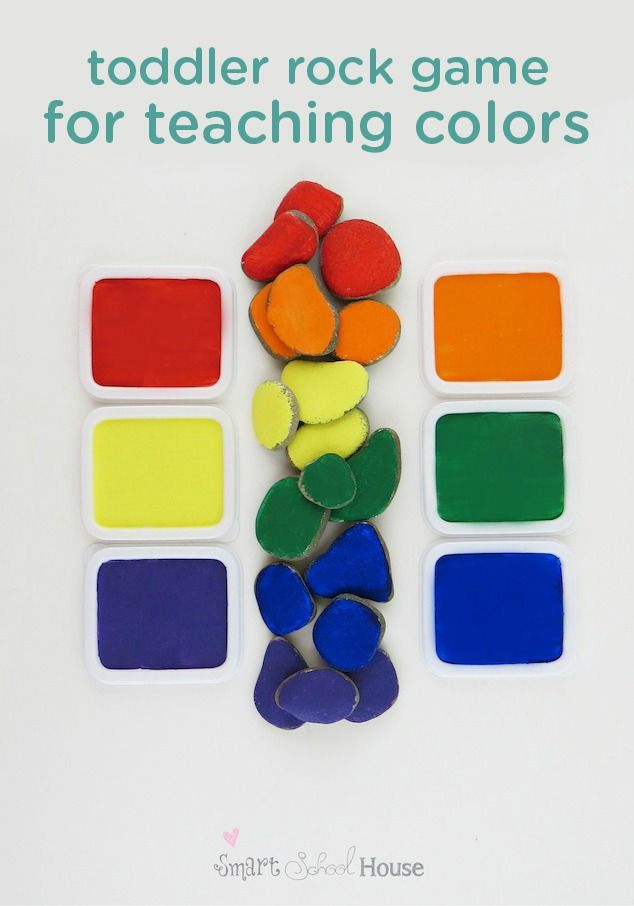 Thus, "put on" coats, boots and hats for all dolls.
Thus, "put on" coats, boots and hats for all dolls.
Please rate the material.
Learning colors in everyday life
Children get most of their knowledge about the world in everyday life: communicating with adults and peers, observing nature, playing. The study of flowers is no exception. Sometimes a child does not need to do special exercises to learn to recognize colors. For this, it is enough that he hears the name of the color and associates it with a specific thing. During daily activities, voice for the child what color the objects are around. Whether you are drawing, playing with blocks, looking at cars in the yard, reading, swimming, eating, dressing - in each of these situations, you can gently teach your child to distinguish colors.
It is important that the study of colors does not turn into torture. You should not constantly test the child's knowledge by asking him which color is which. Soon the baby may just start to ignore you.
“Let's paint the sun yellow!”, “What a delicious green cucumber!”, “Oh, where did the blue cube go? Here he is!" are examples of how you can subtly help your child remember colors.
Learn to Mix Colors Visual Cards
Pictures about colors with pictures
9000 9000
Games for studying colors and their shade
,000the baby has an interest in learning colors, or in order to consolidate existing knowledge, you can invite the child to play special “color” games.
Learning colors puzzle cards
Print the puzzles, cut into 4 parts. Invite your child to assemble puzzles to make a rectangle of the same color.
First, the child is shown a red cube, the mother says: “Look, here is a red cube”, emphasizing the name of the color with her voice. “He is bright and beautiful, red tomatoes, apples, peppers.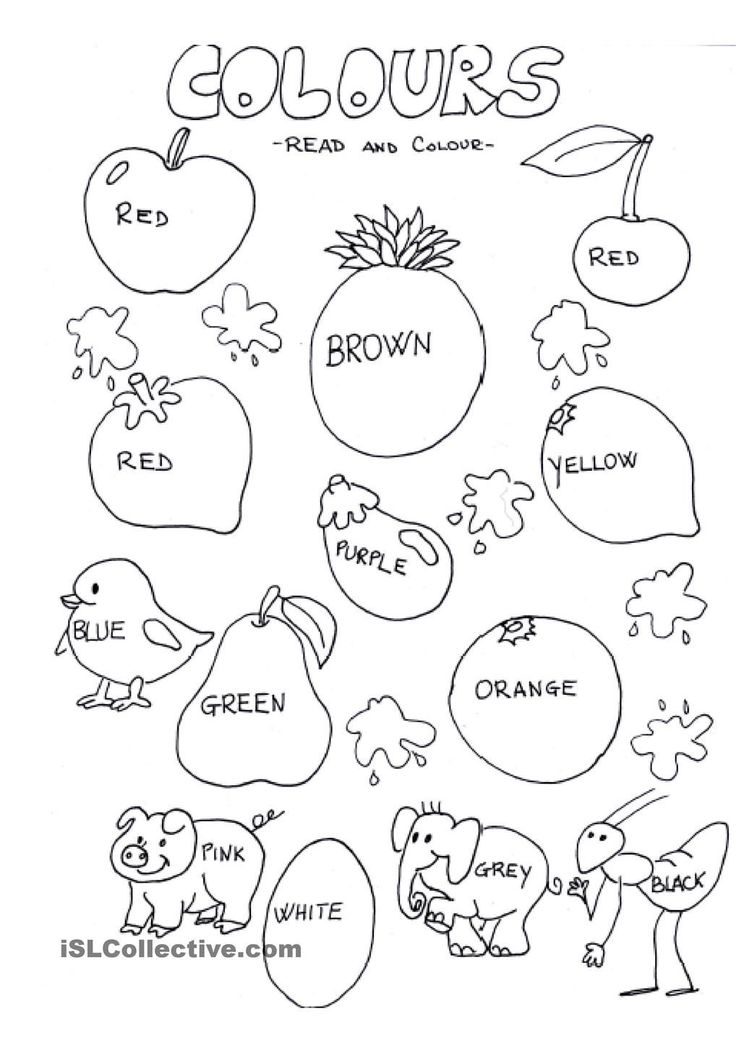 ” Then the mother should give the cube to the baby so that he can properly study the color.
” Then the mother should give the cube to the baby so that he can properly study the color.
The next step is consolidation: mother and baby walk around the apartment and find all the red items (you can prepare in advance and spread them out). The next day, you can consider the cards on which the corresponding objects are depicted, everything is spoken out again. Such classes are repeated for several days (their exact number depends solely on the abilities of the child).
Finally, you should check how well the material is learned. Mom takes two multi-colored cubes and asks: “Show me the red cube, where is it?”. If the answer is correct, you should proceed to the study of the next color (blue) using a similar method. Then - yellow and green. But if the baby is still at a loss, do not rush him.
When the colors are learned, you need to reinforce the material. At 1.5-2 years old, you can offer your child fun games that will help him to correctly distinguish colors. For example, a mother draws in advance houses of different colors (basic) and "inhabitants" - the same shades of animals or men.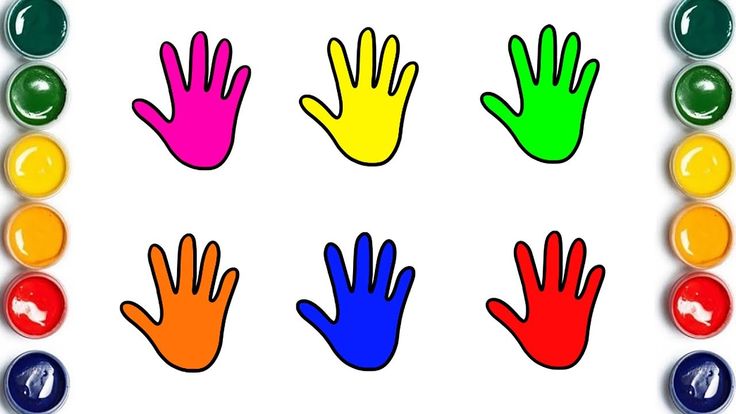 The child must settle them. During work, you should comment: “That's right, we populate the yellow mouse in the yellow house” or “Why do we put the red man in the blue house? How should it be right?
The child must settle them. During work, you should comment: “That's right, we populate the yellow mouse in the yellow house” or “Why do we put the red man in the blue house? How should it be right?
The following exercises are also suitable for age.
- Distribution. Mom gives molds and buttons of different colors to the baby, the child must arrange the buttons into containers.
- Construction of towers from blocks. Only two colors are used, the adult asks the kid to build two towers from them so that each of them has its own color.
The main rule of success is daily, but not exhausting workouts, only in this case the names will be firmly deposited in the baby's brain. Work is currently underway with four primary colors - red, yellow, blue and green. Until they are assimilated properly, one cannot move on. But if the baby has already remembered them well, you can introduce him to new tones.
Activities with an older child
At 2-3 years old, you can offer your little one a solution to the simplest problems, during which he will learn colors with his mother. The following options are possible.
- The parent draws several cars, and the quality of the drawing does not really matter, the main thing is to paint them in different colors. After that, he gives the baby a set of cards or buttons, the color of which matches the color of each car. The task of the baby is to build “paths” for the cars so that they match the tone. The exercise also trains fine motor skills well and, accordingly, is useful for the development of speech.
- Building a train. The parent puts one cube of any tone that is already familiar to the baby, for example, blue. The task of the kid is to continue the train, finding all the cubes of exactly blue color.
- Collect the flower. Mom draws simple flowers with colored felt-tip pens (the middle and several large petals), then cuts them in half and mixes them.
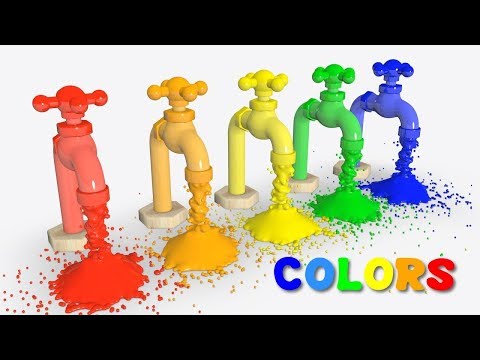 Then he asks the baby, having collected flowers, make a bouquet, name all the tones used.
Then he asks the baby, having collected flowers, make a bouquet, name all the tones used.
These types of tasks help babies sort things correctly by determining whether they are red, yellow, green. During the game, the mother should definitely pronounce the names of the colors, ask the child to repeat - this contributes to memorization. If the child made a mistake, it is important to work it out: perhaps he simply did not understand the task or thought that “it would be more beautiful this way.” Explain again that it is necessary to use cubes (buttons, cards) of exactly one color you named.
Continue learning
Children are very fond of solving riddles, and this should be used to teach them to distinguish colors. In addition, this form of work develops thinking and memory, helps to increase the active vocabulary.
You can offer the child the following riddle: “Here is a well done cucumber, it came to us from the garden, there are many of them.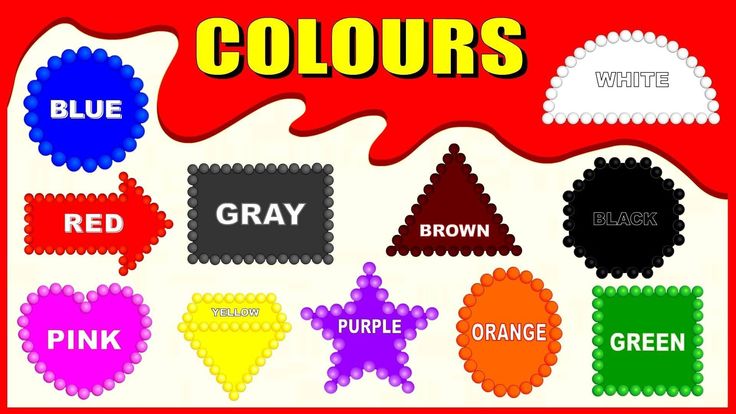 And what color is it? ”,“ And this is a mouse, a cute mouse. It is white, but more often ... What is it? The reading of the text should be accompanied by visualization, that is, show the baby a cucumber, a toy mouse.
And what color is it? ”,“ And this is a mouse, a cute mouse. It is white, but more often ... What is it? The reading of the text should be accompanied by visualization, that is, show the baby a cucumber, a toy mouse.
Next, you can play the following fun games.
- Extra color. In front of the child, several (5-6 will be enough) objects of the same color and one “extra” object of a different color are laid out. The child's task is to find a mistake and tell why he thinks so. You can talk about success if the baby says: "Everything is red, but the ball is green." In a similar game, you can use Gyenesh blocks.
- Matching. Colored figures are used, which the parent mixes, while the child must understand all the diversity and put them in pairs, based on the color.
- "Traffic light". Suitable for fun with those children who already know a little about the names of colors. Mom pronounces the name, the baby must find it in his clothes, if he is, take a step forward, if absent, stay in place.
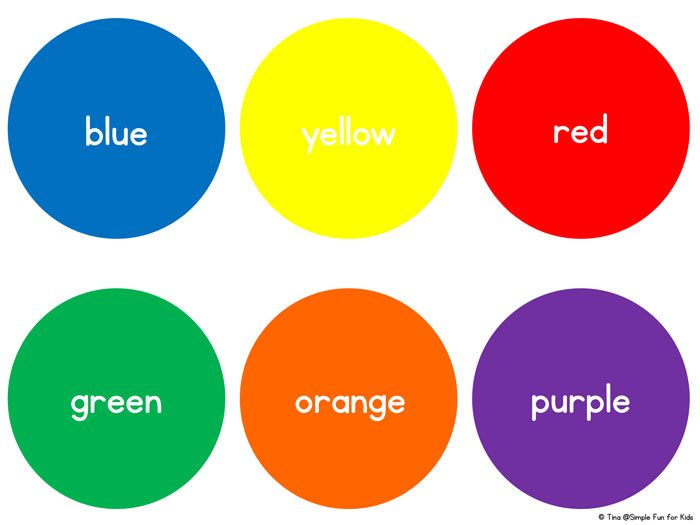 You can add an element of active play to the fun - if the named tone was not in the outfit, the child will try to run across, and the mother will catch him.
You can add an element of active play to the fun - if the named tone was not in the outfit, the child will try to run across, and the mother will catch him.
Every free minute should be practiced, for example, during a walk, repeat to the child that a red car has passed, the grass is green, the flowers are yellow. Then ask him: what color is the grass? What else do you see green? This will help you remember quickly. It is important to remember that children's memory is very plastic, the baby is able to absorb a lot of information, so if any of the objects that interest him is lilac, you can also study this shade, you don’t need to “simplify the task” and call it purple.
Ways to learn colors with a child
Method #1. "Awakening Creativity"
Learning to distinguish colors using paints, plasticine, felt-tip pens and pencils. You can start training in 1 - 2 years. The paint must be non-toxic and wash well.
For babies, freshly squeezed beet or berry juice can be used as a dye.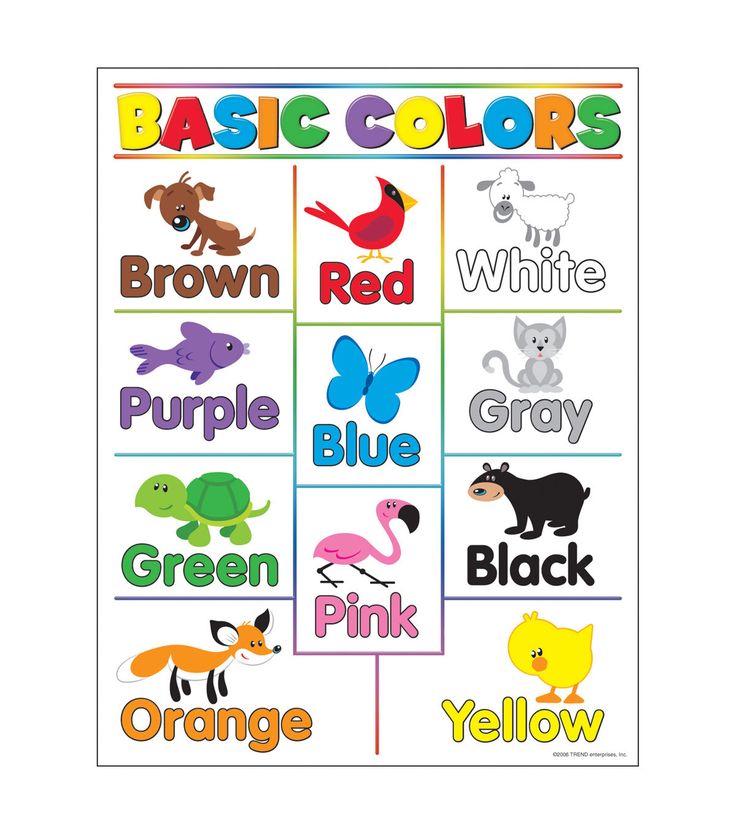 It is safe, but stains from it are difficult to remove.
It is safe, but stains from it are difficult to remove.
Initially, the parent will have to draw.
- say clearly and clearly what color you are drawing;
- let the child draw a couple of lines or completely paint over a sheet of paper;
- make sure that the child does not eat paints, markers or pencils;
- do not begin to learn the next color until the baby begins to confidently name the previous one.
Wax crayons should be used with caution as children often chew on them, scratch with their nails and try to put them in their ears or nose.
Method No. 2. “Finishing the picture”
The study of colors is passive. This method is used in children over 4 years old, as certain mental skills are required. It is necessary to draw a picture in which something is missing. For example, the sun - rays, a hare - an ear, a hedgehog - needles.
The child is offered some pencils. The essence of the task is for the kid to distinguish colors and choose the right one to complete the drawing.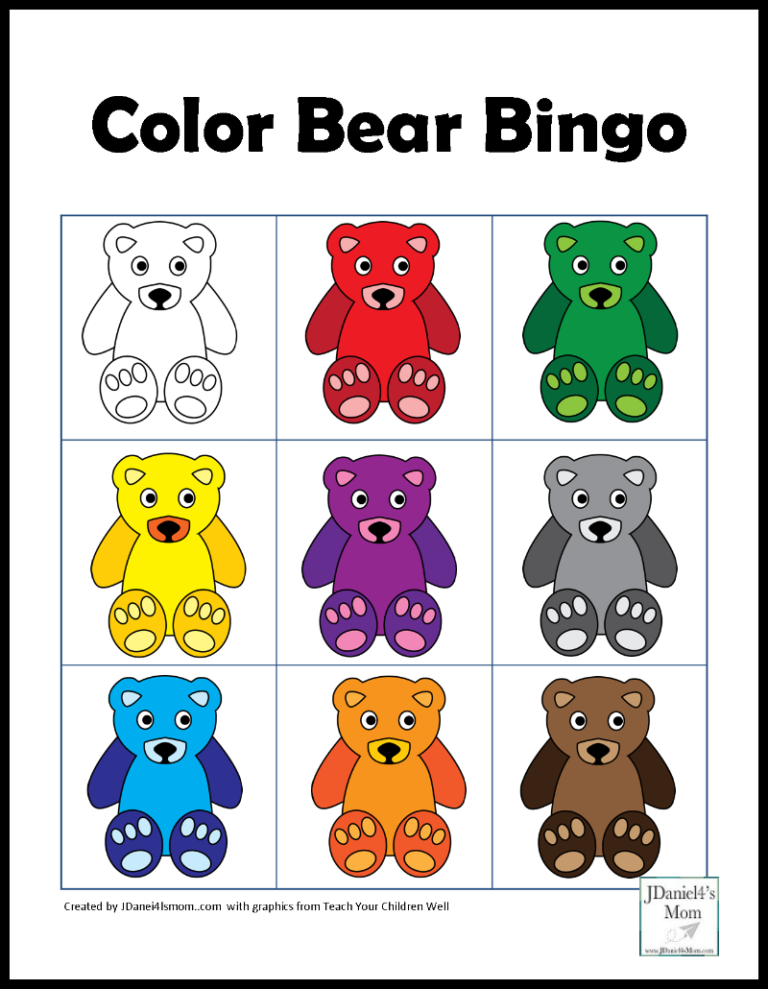 As you get older, the picture becomes more complex with more details.
As you get older, the picture becomes more complex with more details.
Method No. 3. "Playing with an interactive toy"
A modern teaching method that allows parents not to worry too much. It will help to learn colors and check previously studied material. Combines everything with songs, poems and riddles.
Usually each toy has at least 1 light filter built in, the main purpose of which is to attract the child's attention.
Be sure to read the instructions carefully before use. Take an interest in the material from which the light filter and the toy itself are made.
The recommended age for modes in which we learn colors ranges on average from 1.5 to 2 years, although it can be used by older children. In the case of the presence of small parts and collapsible structures, those who are already 3 years old are allowed to play with an interactive toy.
References
- https://www.center-sozvezdie.
